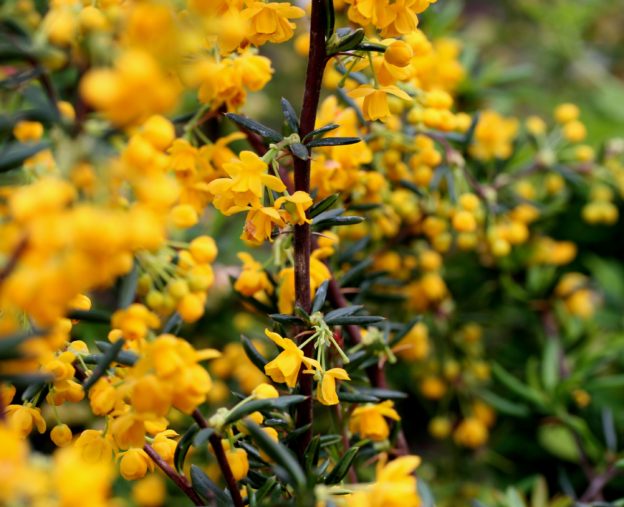With all the benefits that come with living on the coast, there is also the curse of strong winds and salt spray which could hamper your efforts in the garden. However, coastal gardening is not impossible. By understanding the challenges that you are facing and working around these a beautiful garden can be created to flourish even in the tricky conditions.
Shelter
This is probably the most fundamental step in designing a successful coastal garden. Protecting plants from the extreme winds will prevent leaning, abrasion or breaking and allow you to grow more delicate plants. Trees, hedges, shrubs or man made structures will work ideally as a windbreak. It is important to identify the general direction of the wind to erect your shelter in the right place and avoid causing a wind tunnel! A good windbreak will be reduce wind for a distance of 10 times of it’s height. If you are growing your own windbreak it will take time so be patient. You can help along your own windbreak with a shelter such as a mesh screen, netting or woven willow.
Good plants for shelter;

Cordylines are good plants for shelter.
Trees; pinus radiata, escallonias, pittosporums
Shrubs; berberis, pyracanthas, buddlejas
Stay low
Lower plants are much more likely to flourish as the wind will hopefully go over them. Planting in masses with many plants of similar heights can also look great.
Add the colour

Berberis are good shrubs for shelter and colour in a coastal garden.
Once you have sheltered your garden you can start to add the colour and interest with perennials such as these;
Agapanthus, achillea, lupins, geranium (hardy), kniphofia, hemerocallis, papavers and many more. Ask our experts in store for more advice.
Soil
Coastal soil is known for being nutrient poor and extremely free draining meaning that water retention can become a problem. Mulching the garden soil with the right materials can solve this. Use flint, gravel or grit to mulch and also add nutrient rich dressings such as compost, manure or even rinsed seaweed!
Watering and planting
With the evaporation caused by the seaside wind it can be hard to water and plant at the right time. Along with regular watering once in a while it is good to water from above; although this is often discouraged, on the coast it means that you get rid of the salt buildup to prevent salt burn. Also mulch to trap the water. In autumn you should plant any trees and large shrubs in the warm soil to allow them to establish with the winter rains. In spring smaller plants should be planted as their vulnerability means that they need a whole growing season to establish- take care to keep them moist during this season though!
Take it for what it is
The most important thing is to love your coastal garden for exactly that! There is no point trying to turn a garden on the coast into a prim and proper country garden with a perfect lawn and roses. Appreciate the surroundings and take inspiration from them; add some shells, some rope, some driftwood, pebbles and create an interesting and unique coastal garden.







